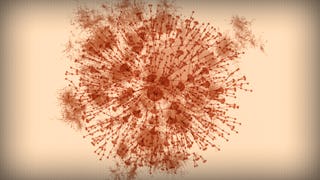IaaS vs. PaaS vs. SaaS: Intro to Cloud Computing
July 8, 2024
Article



This course is part of Data Visualization Specialization

Instructor: Jesus Caban
Included with 
Recommended experience
Intermediate level
Familiarity with basic data visualization concepts and tools such as Tableau or Power BI is recommended.
Recommended experience
Intermediate level
Familiarity with basic data visualization concepts and tools such as Tableau or Power BI is recommended.
Learners will master color theory and its application to enhance data clarity and perception in visualizations across various formats and data types.
They will gain skills to design interactive visualizations that improve user engagement and allow for deeper exploration of complex data.
They will learn to create and analyze hierarchical and network visualizations, effectively representing relationships and connections within data.
They will explore techniques for visualizing geospatial and textual data, using maps, word clouds, and document summaries for clearer insights.

Add to your LinkedIn profile
January 2025
15 assignments



Add this credential to your LinkedIn profile, resume, or CV
Share it on social media and in your performance review

In the course "Advanced Techniques in Data Visualization", you will explore advanced data visualization techniques that will elevate your ability to communicate complex data. Building upon foundational skills, you’ll learn to harness the power of color, interactivity, and specialized visualization methods, such as hierarchical structures, networks, and geospatial data. The course covers the essential role of color theory in visualization, teaching you how to enhance data clarity and accessibility. You will also dive into the world of interactive visualizations, gaining practical experience in creating user-driven data experiences. As you explore hierarchical and network visualizations, you'll discover how to represent complex relationships in a way that is easy to understand.
The course will guide you through the principles of mapping data, allowing you to transform spatial data into compelling visual narratives. Finally, you will learn to visualize textual data, uncovering patterns and insights that might otherwise remain hidden. With hands-on experience using popular tools such as Tableau and Power BI, this course prepares you to create sophisticated, effective, and impactful visualizations for any audience.
Building on foundational concepts, this course delves into advanced visualization techniques, including the use of color, interactivity, and different visualization types such as network and map visualizations. Learners will also gain practical experience with popular data visualization tools.
2 readings
This module explores the role of color in data visualization, covering how color affects perception and communication. Learners will study color perception, psychological effects, and the theory behind primary colors. It will also cover additive and subtractive color mixing, color spaces like RGB, HLS, CIE, YUV, and Lab, and converting images between color spaces. Through practical exercises, learners will gain skills to choose colors that improve the clarity and impact of their visual data presentations.
4 videos2 readings3 assignments
This module focuses on interactive visualization, highlighting how user engagement enhances data interpretation and decision-making. Learners will explore various user interactions, from hover effects to dynamic filtering, and understand the taxonomy of interactions and their impact on data exploration. The module covers selection methods for highlighting, selecting, and manipulating data points. Through practical applications and case studies, learners will gain skills to create interactive visualizations that boost user engagement and improve data storytelling.
4 videos3 readings3 assignments1 plugin
This module explores trees, graphs, and network visualization, focusing on both theory and practice for representing complex data relationships. Learners will study network theory and different types of graphs (directed, undirected, weighted, and unweighted) and their applications. The module also covers visualization techniques like node-link diagrams, adjacency matrices, and hierarchical visualizations. Through hands-on exercises and case studies, learners will develop skills to create visualizations that clearly communicate the structure and dynamics of complex networks, improving their ability to analyze relational data.
4 videos3 readings3 assignments
This module focuses on maps and cartography visualization, highlighting the role of geospatial representation in understanding complex data. Learners will explore how to transform spatial data into effective visual formats and study common geospatial visualizations such as thematic maps, heat maps, and interactive web maps. The module covers the benefits and trade-offs of different map types, helping learners select the best visualization methods for specific data and audiences. Through practical exercises and case studies, this module equips learners with the skills to create impactful maps that enhance spatial analysis and decision-making.
4 videos4 readings3 assignments1 ungraded lab
This module covers the challenges and opportunities of visualizing unstructured data and textual documents. Learners will explore the complexities of representing textual information and the use of word clouds, discussing their benefits and limitations. The module also examines techniques to summarize documents, highlight key content, and track changes over time. Through hands-on activities and case studies, learners will gain the skills to effectively visualize text data, improving comprehension and communication of information from textual sources.
5 videos3 readings3 assignments



The mission of The Johns Hopkins University is to educate its students and cultivate their capacity for life-long learning, to foster independent and original research, and to bring the benefits of discovery to the world.


Microsoft
Course


University of Illinois Urbana-Champaign
Course


Johns Hopkins University
Specialization


Johns Hopkins University
Course





Unlimited access to 10,000+ world-class courses, hands-on projects, and job-ready certificate programs - all included in your subscription
Earn a degree from world-class universities - 100% online
Upskill your employees to excel in the digital economy
Access to lectures and assignments depends on your type of enrollment. If you take a course in audit mode, you will be able to see most course materials for free. To access graded assignments and to earn a Certificate, you will need to purchase the Certificate experience, during or after your audit. If you don't see the audit option:
The course may not offer an audit option. You can try a Free Trial instead, or apply for Financial Aid.
The course may offer 'Full Course, No Certificate' instead. This option lets you see all course materials, submit required assessments, and get a final grade. This also means that you will not be able to purchase a Certificate experience.
When you enroll in the course, you get access to all of the courses in the Specialization, and you earn a certificate when you complete the work. Your electronic Certificate will be added to your Accomplishments page - from there, you can print your Certificate or add it to your LinkedIn profile. If you only want to read and view the course content, you can audit the course for free.
If you subscribed, you get a 7-day free trial during which you can cancel at no penalty. After that, we don’t give refunds, but you can cancel your subscription at any time. See our full refund policy.
Yes. In select learning programs, you can apply for financial aid or a scholarship if you can’t afford the enrollment fee. If fin aid or scholarship is available for your learning program selection, you’ll find a link to apply on the description page.